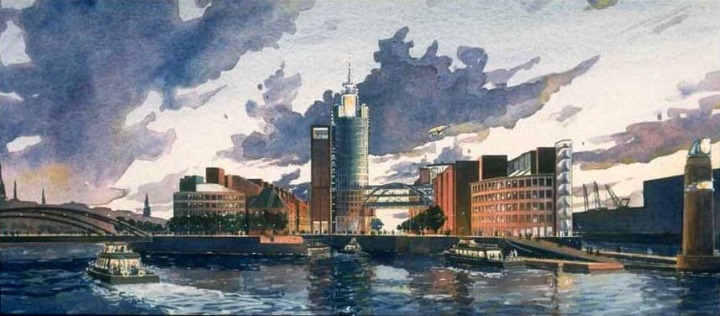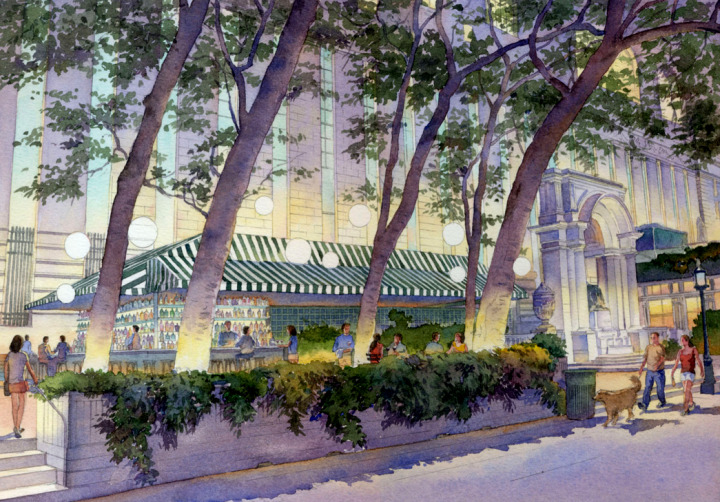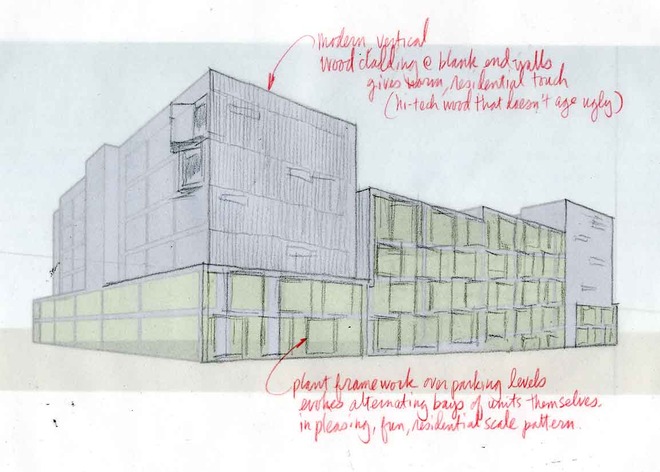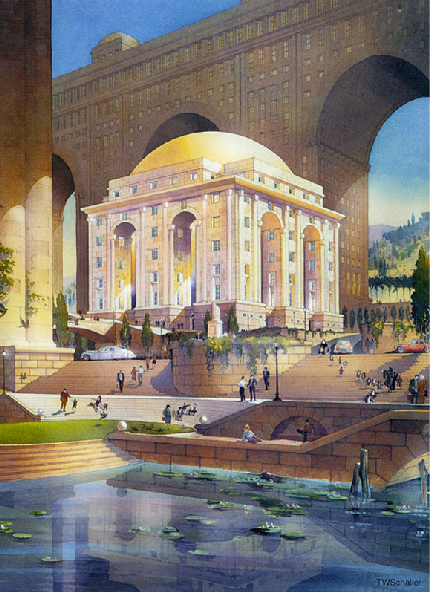Tutorial showing steps in developing a concept for an aquarium in the Dubai Mall. All done in the Procreate sketching, painting and illustration app.
Have Pen Will Travel: Benefits To Architects of In-House 3rd Party Sketching and Rendering
How Architects and Interior Designers Can Design Using Procreate on the iPad Pro
Automatically Collect Every Image You Ever Sent or Received in Gmail
Once you add this extension (or lab feature) to your gmal settings, this amazing code runs quietly in the background to pull a copy of every image you have either sent or received in gmail, going back to the beginning of your gmail life. What's more, it automatically collects these images in a folder you can later find in the left column of your (Mac) finder window (see image below). Its kind of a miracle.
Architectural Presentation Techniques: The Art of the Digital Sketch
In yesterday's post about loose architectural sketches, we talked about traditional pencil and pen-and-ink sketches. Today we'll talk about what I call a loose digital sketch. The loose digital sketch begins with a loose manual sketch composing the view and identifyling the important elements in the proposed design.
But then the loose digital sketch takes a turn to photoshop.

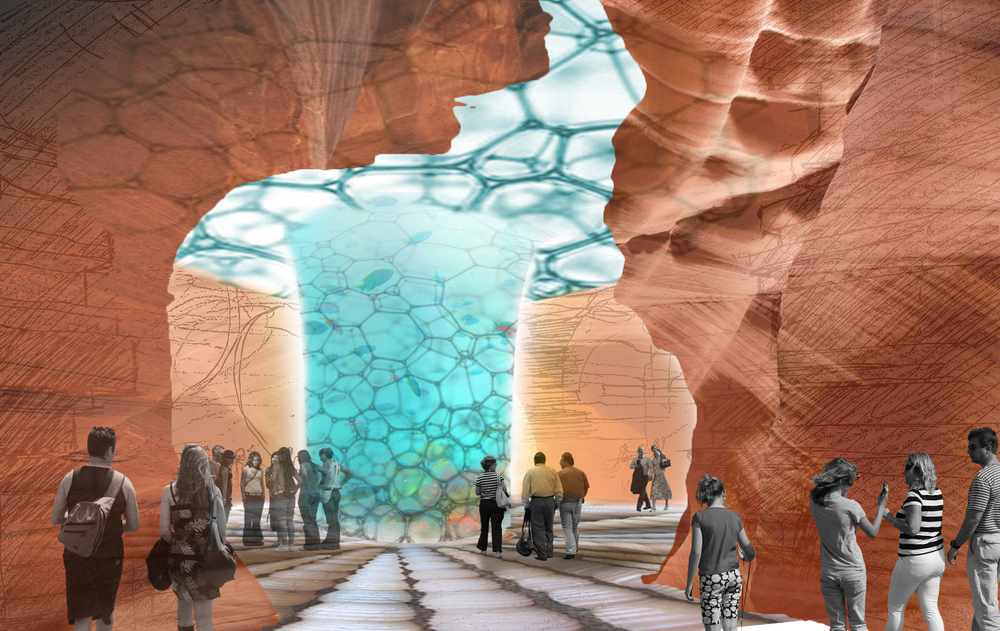
Working closely with the designer, the architectural renderer...
Architectural Rendering Technique: The Art Of The Loose Sketch
Even in this digital design age, there is a place for the loose architectural rendering. It is fast where other architectural rendering techniques are slow. It is non-commital, where digital rendering has to be precise in order to look good. It's also not a bad metaphor for life. What do I mean by that?
 Loose architectural renderings and sketches are still one of the most important architectural rendering techniques. In this example, the author uses felt tip pen to work directly on top of the soft pencil sketch used to visualize the space and develop the design before the architect's eyes. This insures that the sketch stays loose and that one's attitude toward the rendering does not become too precious.
Loose architectural renderings and sketches are still one of the most important architectural rendering techniques. In this example, the author uses felt tip pen to work directly on top of the soft pencil sketch used to visualize the space and develop the design before the architect's eyes. This insures that the sketch stays loose and that one's attitude toward the rendering does not become too precious.
I mean, how many times in life is 75% or even 85% of the idea...
Pencil Sketching is the New Computer Aided Design
As digital modeling and architectural digital rendering continue to chnage our industry for the better, the arts of architectural rendering and architectural sketching in watercolor, pencil, and pen-and-ink become huge asstes in the constant battle to stand out among competitors all using the same digital tools.
 Architectural sketching and storyboarding in watercolor
Architectural sketching and storyboarding in watercolor
They engage clients' emotions, connecting with that deep thing that persists in all of us--that ability to...
Architectural Sketching and Rendering For The Digital Rendering Age
 Above: This architectural sketch (or what some might call an architectural rendering) in pencil shows the architect's design concept for an underground book storage addition to the Princeton University library. Visualizing the design concept in quick pencil sketches not only engaged the client in an attention-grabbing ad humanistic way, it also served as a kind of art direction to help guide the third party architectural digital renderers.
Above: This architectural sketch (or what some might call an architectural rendering) in pencil shows the architect's design concept for an underground book storage addition to the Princeton University library. Visualizing the design concept in quick pencil sketches not only engaged the client in an attention-grabbing ad humanistic way, it also served as a kind of art direction to help guide the third party architectural digital renderers.Ahh the Smell of Pen and Ink Architectural Rendering in the Morning
Pen, ink and tracing paper remains one of the effective forms of architectural rendering ever devised, but what if we combined it with photoshop and a digital aesthetic?

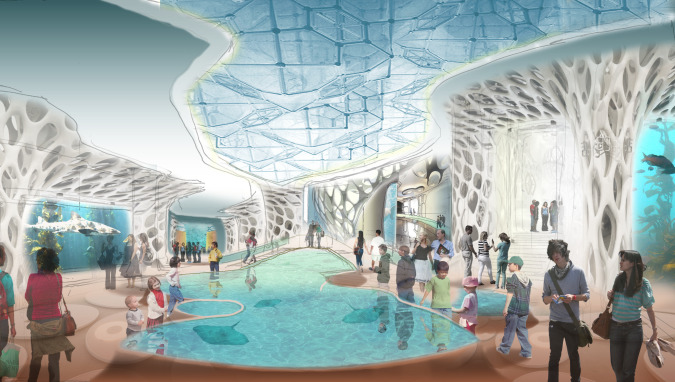
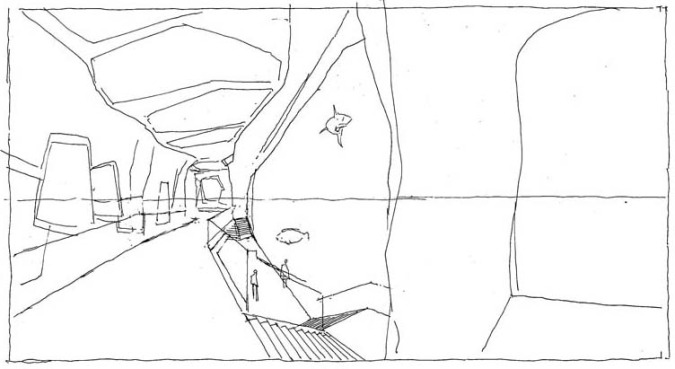
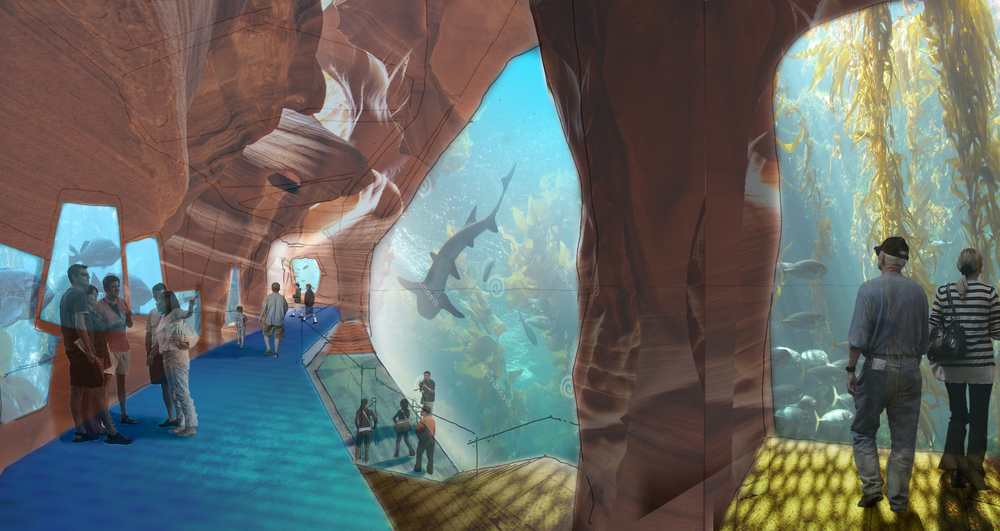
This architectural rendering project was a lot of fun, done right in the architect's office with close collaboration between architect and architectural illustrator. I would love to know what you think? Please leave coments below.
(The author is a registered architect and architectural illustrator with years of experience helping architects and interior designers develop and present their ideas in dramatic and cost-effective ways. From concept design to final presentation, we work in your office or from our NYC studio. 413-250-8800.)
A Year-End Thanks To You, Reader, And Your Picks For This Blog's Best Posts of 2015
It’s day three (or is it four? I’ve lost count) of the approaching 2015 year-end holiday season. You’re getting sick of reading the same old online sites: Huffpo, NYT, Fox News, what’s the difference? Why not take a break and read what you voted for as this blog's Best of 2015? And don't forget to join the discussion by leaving your comments!
With humble gratitude for your attention, I give you: the best of the 3-D Visualization Blog, 2013
Pitch Your Schematic Design Ideas With Digital Sketches, NOT Digital Or Traditional Architectural Renderings
Presenting schematic architectural and interior design ideas to your client in the digital age can be challenging. The problem? The photo-literalism of digital images can, if presented too early, elicit an equally literal response in your client and put the organic “Concept-to-DD-to-CD” design process at risk.

Like all technological advances, digital architectural rendering presents us with a double edged sword. On the one hand, digital software gives designers the unprecedented power to present schematic design ideas as photorealistic fait accompli. On the other hand
Use Digital Architectural Sketching To Streamline Client Approvals
It's one week before your next big design meeting. You have multiple ideas to present, but your goal is to secure your client's approval of a single direction so you can complete this phase, bill for it and move your team on to the next.

Back in the day, architects solved this problem by presenting loose architectural sketches (with maybe a little color thrown on them), blown up several feet wide so as to wow the client with vagueness...but times have changed and clients have changed with them.

Modern clients have grown up in a world of photo-realistic digital images.Their parents understood that hand drawn sketches and diagrams were a part of the design development process, but this generation has
Architectural Rendering Techniques: Painting an Architectural Elevation in Watercolor
The world of architectural rendering is changing...or is it? Even in this digital age, architectural renderings need to communicate a specific design while delighting the senses. Whether you use digital architectural rendering techniques or traditional architectural rendering techniques to do that, I hope you enjoy this post documenting the techniques I used creating a traditional architectural rendering in watercolor made for the Yale School of Music (as a gift to the donor giving the funds for the addition at the left of the original building in the photo below).
 This is my current set up: computer for email, image research and Pandora; watercolor palette and old school drawing implements, bookshelves and sideyard beyond
This is my current set up: computer for email, image research and Pandora; watercolor palette and old school drawing implements, bookshelves and sideyard beyond
With your permission, I'll keep words to a minimum and let the images speak for themselves.
Traditional Architectural Rendering Plus Digital Architectural Rendering Equals Hybrid Architectural Rendering
Architects have had to be resourceful since the bankers brought the global economy to its knees in 2008. I mean, we taxpayers with jobs couldn't let the bankers starve, could we? Still, after we shared our own after-tax income to save these valuable executives and restore their bonuses, architects (and a few other professions) had the problem of finding work to replace that income. (OK, I'm being silly here. Nothing said the rest of us had to maintain our lifestyles or send our kids to college.) That's when we began re-inventing ourselves: finding new clients, downsizing our firms, exploring more efficient ways to deliver services and get the ball rolling again.
 My thanks to my friend Chad Rush for his help in coloring this puppy
My thanks to my friend Chad Rush for his help in coloring this puppy
One of the ways that architectural renderers have reinvented themselves is to blend the world of traditional architectural rendering with digital architectural rendering, resulting in the so-called hybrid architectural rendering. Some argue that the hybrid architectural rendering combines the best of both into a compelling new form that connects the work with the emotions of the client and helps architects differentiate themselves from the pack. Others just think it looks cool and gives the client more options to quickly explore a mood or time of day.
 Here is the original pencil tone drawing of a proposed nightclub terrace in Las Vegas. (Architect's name withheld by request)
Here is the original pencil tone drawing of a proposed nightclub terrace in Las Vegas. (Architect's name withheld by request)
Whatever your opinion, I hope you will...
Hybrid Architectural Renderings Mix Traditional Architectural Renderings Techniques With Photoshop
We've talked quite a bit about hybrid architectural renderings in this blog. A hybrid architectural rendering is any rendering that mixes traditional and digital techniques so as to leverage the best characteristics of both.

Traditional architectural rendering, as the argument goes, communicates at some deep level in the human brain, connecting people--even against their will, Don Draper might say--with emotions still stirred by handmade artifacts, as in a handmade drawing or painting.
Digital architectural rendering techniques, on the other hand, brings advantages no human artifact can compete with: the illusion of photo-realism; the advantages of infinite visual adjustment in very little time, and my favorite:
Hacking Gmail to Keep Track of Your Favorite Internet Discoveries
One of the reasons I love gmail is because of the many ways you can casually hack it. For example, when I come across a post or an idea on the internet that I want to keep track of, I email it to myself with the word "Keeper" (as in fishing) in the title. Then I set up a filter that keeps everything with the word "Keeper" in the title in a folder named Keeper. That way all I have to do is click on the Keeper folder (in the left hand list of folders in my gmail) and boom: everything is right there.
OK, so you already knew that, great. But did you put the following amazing link in your Keeper folder? It's a kind of storyboard that a favorite illustrator of mine, Christoph Nieman, created after hearing an interview between Terry Gross and Maurice Sendak. I'm sure he had help at the NYT turning it into this sweet little video, but please enjoy:
Fast, Low-Cost Architectural Sketches Help Realtors and Prospective Buyers Study Design Options Before Buying
As an architect who specializes in early-stage concept design, architectural sketching and rapid visualization, I get to serve as one-stop shop for realtors, developers and prospective homeowners wanting to study their options before committing to buying an important property, or before engaging a "high profile" architect who, given the pressures of running a large practice, might just assign the exercise to a couple of talented in-house designers anyway.
In the collaboration posted here, I worked with a Boston developer to sketch (in a fraction of the time required by a larger firm) the look and feel of a 120-unit, future-looking condo project in a prosperous Boston suburb.
 Early study based on SketchUp massing study: the Idea of pre-fab, stackable units enters inWe used a combination of traditional and digital architectural rendering techniques to explore her options, culminating in the simple black-and-white digital renderings at the end. Unfortunately, the banking meltdown of 2008 nipped the project in the bud, but...
Early study based on SketchUp massing study: the Idea of pre-fab, stackable units enters inWe used a combination of traditional and digital architectural rendering techniques to explore her options, culminating in the simple black-and-white digital renderings at the end. Unfortunately, the banking meltdown of 2008 nipped the project in the bud, but...
My Friend Tom Is Cool
I remember going to the bookstore at the Helmsley House on Madison Ave. to get my copy in 1990. Clark and I used to keep it open on our desks when we were working together like I told you. Tom sort of blew everyone's mind because he did these images for himself and for his books, with no client involved. Did you ever have friends like that? That's when you know a true artist. So there we are trying to figure out how this guy does these amazing architectural renderings in watercolor and these amazing watercolor techniques, and just when you think you may have figured out one of his moves, like underpainting, which sounds like "underpanting" but isn't, which Tom, because he is actually a pretty wild and crazy guy would probably laugh at if you did it to somebody, he...
How To Use Key Words To Attract Attention To Your Website
Keywords are the terms that people use when trying to find what they are looking for on the internet. This site is a Squarespace site, and one of the features Squarespace provides, along with ready-made templates and hosting and comprehensive analysis of your traffic, is a list of the keywords that people use to find your site. As a rule, these words tend to be a surprise, never quite aligning with the terms you, as site creator, thought people would use when you first tried to guess them.
 A Proposed New Headquarters for LLadro Porcelain, Jay Valgora, Studio V, Architect
A Proposed New Headquarters for LLadro Porcelain, Jay Valgora, Studio V, Architect
As of this morning, the keywords people used over the last week to find this site, whether they were looking for something like it or something else, were, in order of use:
- architectural rendering
- watercolor techniques
- architectural renderings
- architectural rendering techniques
- watercolor rendering techniques
- pen and ink techniques
- watercolor rendering
- watercolor techniques
- architectural sketches
- watercolor rendering techniques
- watercolor techniques
- architectural watercolor rendering techniques
- pen techniques
- different watercolor techniques in rendering
- architectural sketching
- pen and ink
- sketching techniques
- architectural rendering in watercolor
- rendering watercolor
You get the idea. Actually that's not too bad. A few weeks ago one of the terms was "movable hot tub," so this week's visitors are a little more focused.
I don't pretent to understand how the search engine crawlers that comb the internet every night make a distinction between authentic use of keywords (aka "white hat" search engine optimization or SEO), and the so-called "black hat" use of keywords (such as I am ironically attempting to practice here) but somehow they do, and part of that has to do with pictures (and captions, believe it or not) that relate to the keywords, so I'll attach some of those now and just say goodbye until next time, and thanks for reading this.
 This was an architectural rendering in watercolor done for a really nice architect named David at MR Architecture in NYC.
This was an architectural rendering in watercolor done for a really nice architect named David at MR Architecture in NYC.
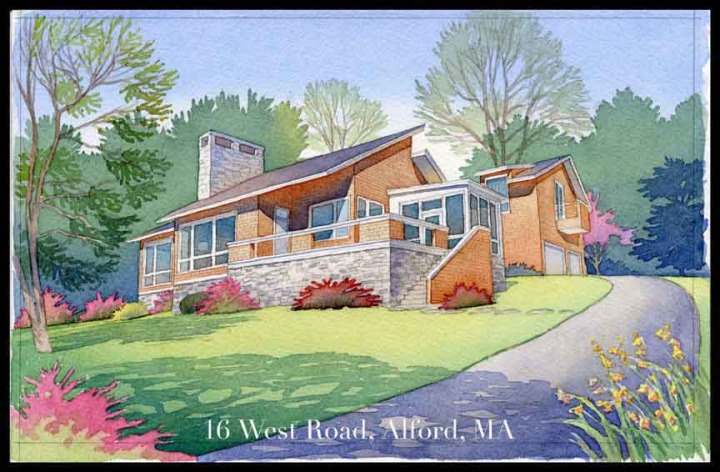 This was an architectural sketch in watercolor done for a speculative real estate project in Alford, MA
This was an architectural sketch in watercolor done for a speculative real estate project in Alford, MA This is an architectural rendering in watercolor of a section of a library (to which Shepley Bullfinch Architects in Boston, MA were making an addition to) at Lehigh University
This is an architectural rendering in watercolor of a section of a library (to which Shepley Bullfinch Architects in Boston, MA were making an addition to) at Lehigh University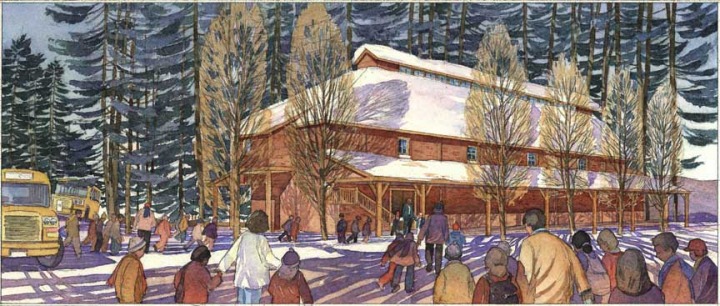 This is an architectural rendering in watercolor of a concert hall for the New Hampshire Music Festival based in Concord, NH by a really nice architect who's name escapes me, but he was a great guy, as were the clients at NHMF!
This is an architectural rendering in watercolor of a concert hall for the New Hampshire Music Festival based in Concord, NH by a really nice architect who's name escapes me, but he was a great guy, as were the clients at NHMF!
How To Find An Architectural Renderer
These days it is no easy task to find an independent architectural renderer. With every architectural graduate student now capable of creating digital architectural renderings, the registered architects who practice watercolor techniques, architectural rendering, architectural watercolor rendering, architectural sketching, watercolor rendering techniques, architectural sketches, watercolor techniques, architectural rendering or any of the other disciplines associated with traditional architectural rendering are becoming harder to find.
My name is James Akers, I am a licensed architect and I specialize in watercolor techniques, architectural rendering, architectural watercolor rendering, architectural sketching, watercolor rendering techniques, architectural sketches, watercolor techniques, architectural rendering and all of the other disciplines associated with traditional architectural rendering. Email me at jakers3 at gmail dot com, or call me at four-one-three 250-8800 to discuss what you need, and how to provide it in the quickest, most affordable way possible. Thanks.
